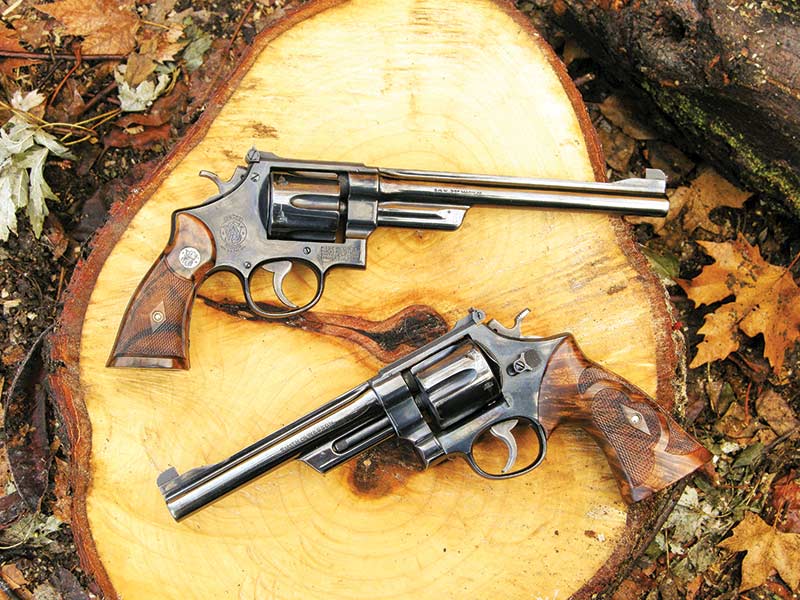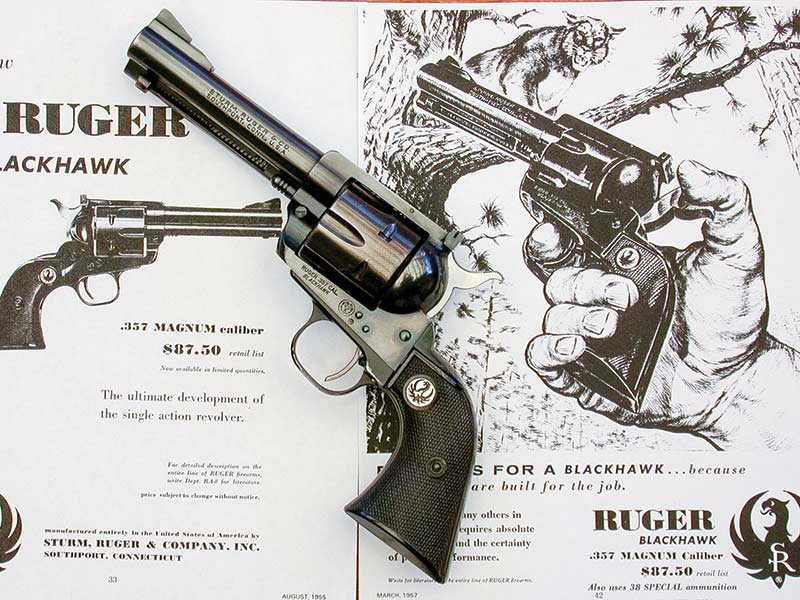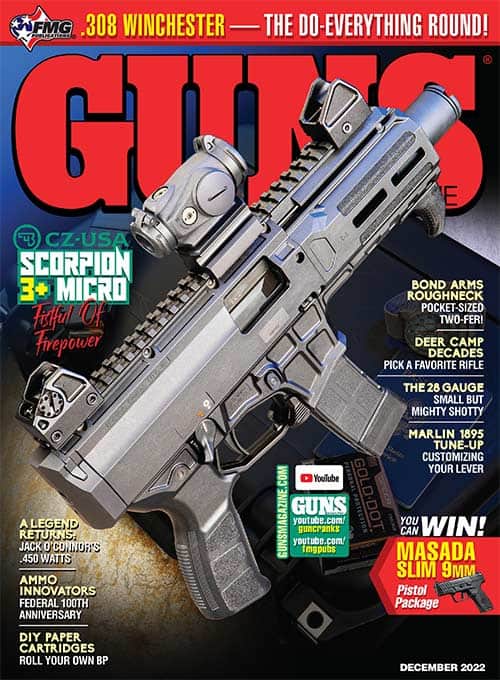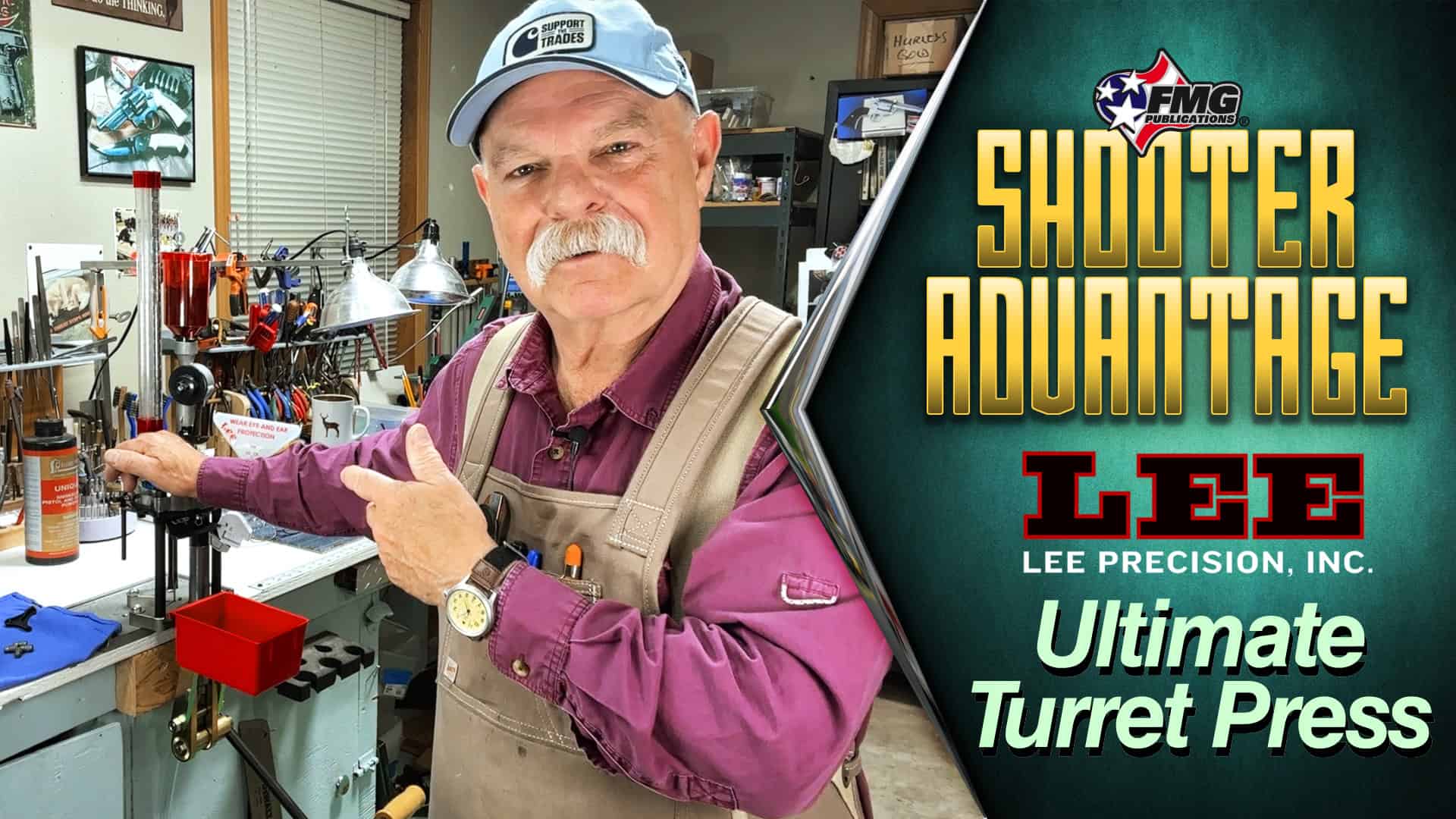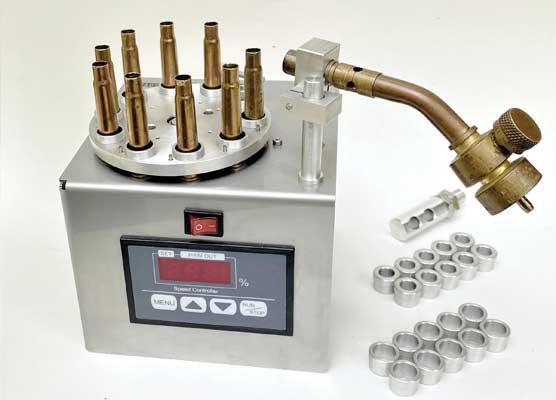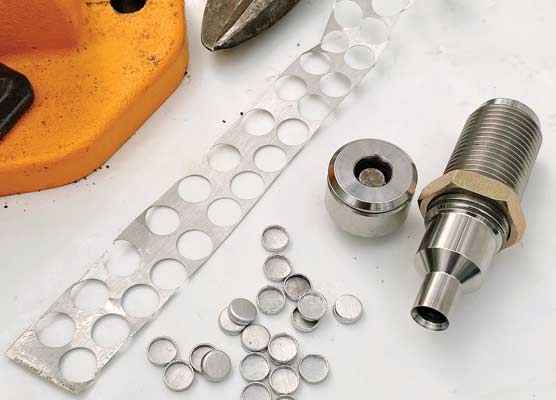The .38 Special in .357
Magnum Sixguns
Versatility defined
Sixty years ago, .357 Magnum ammunition was difficult to find and .357 Magnum brass was virtually nonexistent, unless one bought a box of new ammunition and reclaimed the brass. Since I could not find or afford .357 Magnum brass, I did the next best thing — for many years, 90%+ of the reloads going through my two .357 Magnums were assembled with .38 Special brass.
I had a single-cavity mold, the Lyman #358429, a semi-wadcutter design by Elmer Keith nearly 100 years ago. It dropped a long-nosed bullet weighing around 170 grains. These were carefully cast over my mother’s kitchen stove, lubed by placing them base down in a pie tin with molten lube poured around them. When the lube hardened the bullets were cut out using what was then known as a Kake Kutter — simply a tube just slightly larger than the bullet that would fit over the bullet and cut it out cleanly. Then the bullets were sized one at a time, pushed through the sizing die using a mallet and a wooden dowel. Once this was all accomplished, they were loaded in .38 Special brass using a Lyman #310 Nutcracker reloading tool. After going through all of this to get loads, you can bet I shot them very carefully.
In The Beginning
The .357 Magnum sixgun, which originally came from Smith & Wesson in 1935, was tested early on by a young Elmer Keith who had already come up with his Heavy Loaded .38 Special for use in the Smith & Wesson .38/44 Heavy Duty and .38/44 Outdoorsman. Both of these .38 Specials were built on the large .44 Special Smith & Wesson frame that had been used for the Triple-Lock and the 1926 Model. Keith elected to stay with his .38 Special loads even in the new .357 Magnum. His load at the time consisted of his #358429 Lyman/Ideal bullet loaded over 13.5 grains of #2400. This was a very heavy load then and still is. In fact, #2400 is hotter than it was back then. Muzzle velocity was over 1,400 fps and even today it is still hotter than many factory .357 Magnum loads.
Skeeter Skelton started reloading just a few short years before I did and probably found himself in the same situation regarding brass. At about the same time, Ray Thompson designed what I still consider the best standard-weight cast bullet ever to come from the mind of man for the .38 Special and .357 Magnum.
Keith’s bullet had a long nose to fill out the cylinder of his .38 Special Heavy-Frame sixguns and also a large single lube groove along with one deep crimping groove. Thompson’s bullet is quite different. The nose is shorter, the lube grooves are smaller, it has two crimping grooves and also a gas check fits on the base. Thompson designed his bullet with two crimping grooves, the top one to be used with .357 Magnum brass; the lower one with .38 Special brass. This use of the lower groove allowed for more powder space in the .38 Special case.
I’d like to be able say accuracy using short cases in Magnum-length cylinders will always be good. However, whether the situation is .32 Long in .32 Magnums, .44 Specials in .44 Magnums, .45 S&W in .45 Colt, or .38 Specials fired in .357 Magnum sixguns, it’s always the same — the answer can only be found by actually shooting the loads in each individual sixgun. Most of the time, loads will be very accurate, sometimes they will be mediocre and once in a while the groups will look like they were made with a shotgun. The only way to find out is to actually shoot the loads. Every sixgun is like people; they all have individual personalities.
Today
With very few exceptions, progress and I have not been great friends and the most used loads I employ today are a perfect example of this. When it comes to loading .38 Specials for use in .357 Magnum sixguns, I am smack dab right in the same spot I was more than 60 years ago. I’m still loading the Keith #358429 Lyman bullet over 13.5 grains of #2400 and the only progress I have made is also adding the Ray Thompson #358156 Lyman bullet and the RCBS #38-150 KT. All three of these bullets provide excellent accuracy with only the Thompson bullet fitted with a gas check. By loading the Thompson #358156 crimped in the bottom groove, velocity is naturally reduced compared to the Keith #358429 bullet. An example can be found by looking at these loads fired through the Ruger Old Model Blackhawk, which I have had cut back to the barrel length of 5 ½”. With the Keith bullet and my 13.5 grains of #2400 load, the muzzle velocity is 1,330 fps while with the Thompson bullet, it is just under 1,200 fps. The latter bullet is just a shade more accurate. However, for all practical purposes they are identical.
Some may ask which bullet is the most accurate. This is a question that cannot be answered as once again we must take in the personality of each particular sixgun. Here are some examples of excellent accuracy with these bullets: #358429 Keith, Ruger Bisley 7 ½” with a muzzle velocity of 1,383 fps and a five-shot group of ⅝”. Switching to the #358156: Ruger Flat-Top 10″, 1,369 fps, ⅞”; Colt Single Action 5 ½”, 1,306 fps, 1″ group. With the RCBS #38-150KT: Colt Python 8″, 1,400 fps, ¾” for five shots and with the Smith & Wesson 6″ Model 586, 1,335 fps and a 1″ group. I also use a lot of #4227 for slightly milder loads. Of all the experimenting I’ve done with these type loads over the past 60 years, the most accurate load/sixgun combination I have found is the RCBS #38-150 KT over 12.5 grains of #4227 through a 7 ½” Ruger Bisley for a ½” group at just under 1,100 fps.
Conditions today are certainly much different than they were in 1956. I have plenty of .357 Magnum brass on hand and it is now easy to come by and relatively inexpensive. Starline offers excellent .357 Magnum brass as well as .38 Special. I just enjoy my Heavy .38 Special loads and also there is the fact that the Classic N-Frame .357 Magnum sixguns are short-cylindered and will not accept the Keith bullet crimped properly in Magnum brass. This is also true of some of the early Ruger Blackhawks. The Keith bullet can either be crimped over the front shoulder in Magnum brass or in .38 Special brass using the crimping groove. I mostly prefer the latter.

Get More Revolver Content Every Week!
Sign up for the Wheelgun Wednesday newsletter here:
